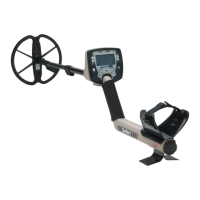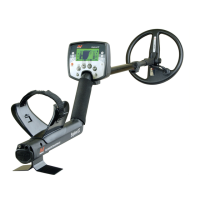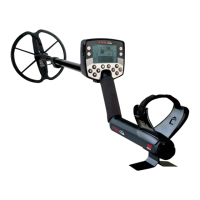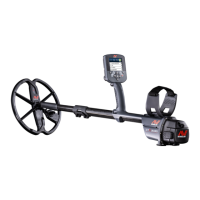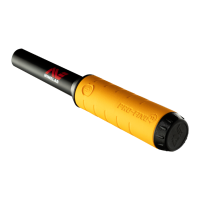12
Where to Find Gold
Many nugget-bearing areas are the result of
broken-down gold reefs containing quartz and
ironstone. Experienced prospectors learn to ‘read
the ground’ and look for tell-tale signs indicating
potential gold-bearing fields. If you are new to
prospecting, visit known gold fields, ideally ones
that produce gold nuggets 0.1 grams or larger.
Pay attention to the soil colour, rock types and
vegetation, as this knowledge may help you to
find gold elsewhere. Be aware that gold dust will
not be detected by your SDC 2300.
A typical problem encountered while using
some metal detectors in the goldfields is the
presence of heavy concentrations of ironstone
causing many false signals. The SDC 2300 is
designed to perform well in these conditions,
ignoring most ironstone and allowing gold to be
discovered.
The SDC 2300 is an ideal detector for patch
hunting. The ground can be rapidly scanned
until a first piece of gold is found, and then a
slower systematic search of the area can be
made to see if other gold nuggets are located
nearby. This can be achieved by detecting the
area very slowly, with significant coil overlap of
each sweep and by approaching the location
from three different directions.
Identifying Target Signals
• Metallic targets (including gold) will usually
give a consistent response when the coil is
swept from different directions.
• Very sudden changes in mineralisation may
produce a signal (ground noise) from the
detector. Usually this signal is very broad
and uneven when the coil is swept from
different directions and may only give a
signal from one direction.
• Large deep gold can give a broader target
response than smaller shallower gold.
• If you are not sure if the sound is ground
noise or a target signal, scrape off about
40 mm of soil and re-check. If the signal
becomes weaker it is probably ground noise.
If the signal remains the same or becomes
stronger, it is likely a metallic target signal. If
you are still not sure, make the hole deeper
and repeat the process.
• Charcoal can sound loud and like a metallic
target when close to the surface. The target
response from charcoal is often broader and
becomes patchier as the ground is dug.
• It is possible that gold can be completely
encased in certain rocks.
• If in doubt, you should always continue to dig
until the reason for the signal is determined.
Optimising Your Detecting

